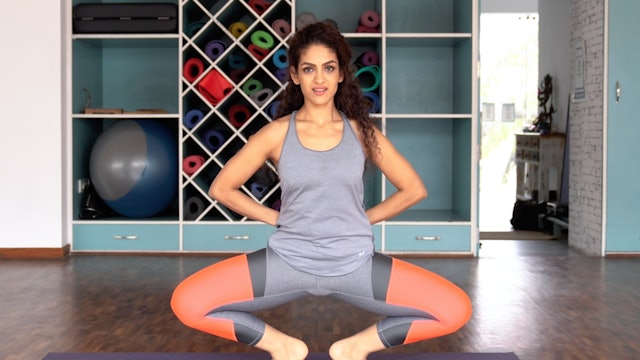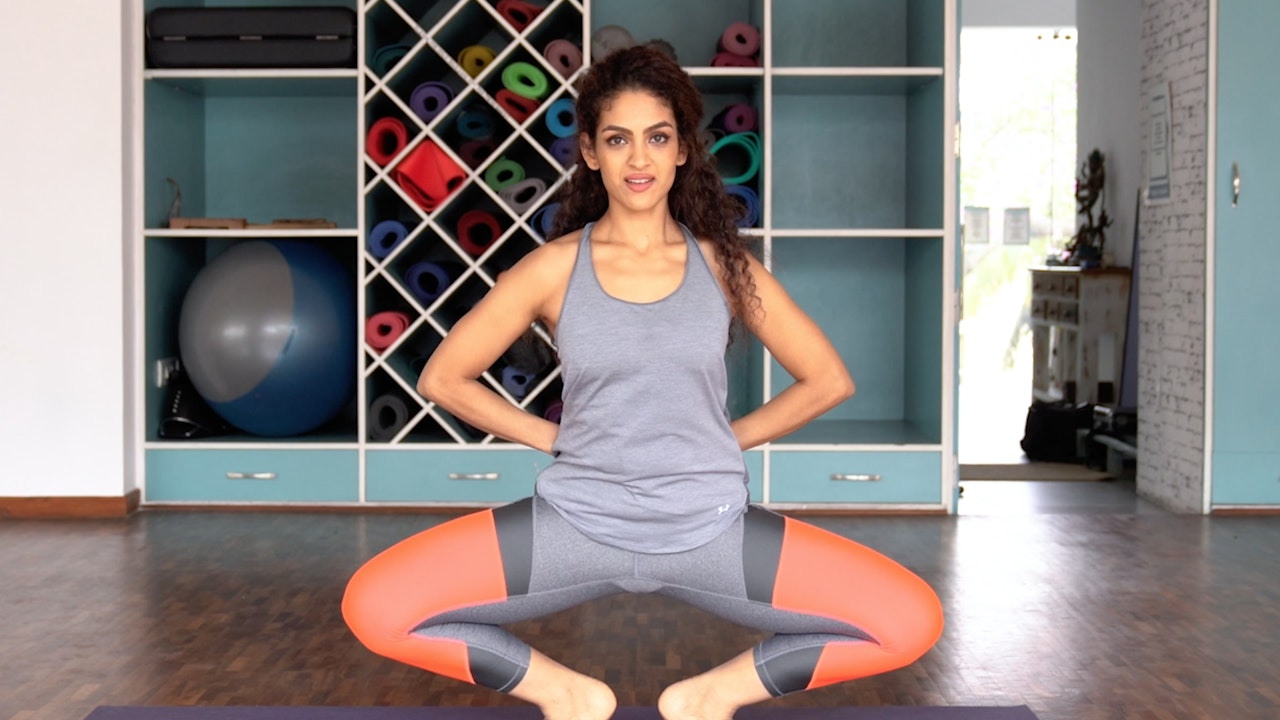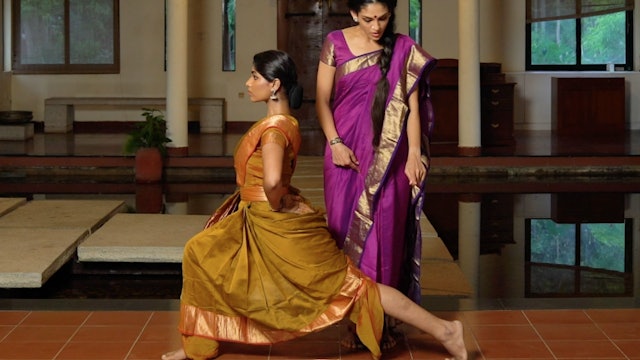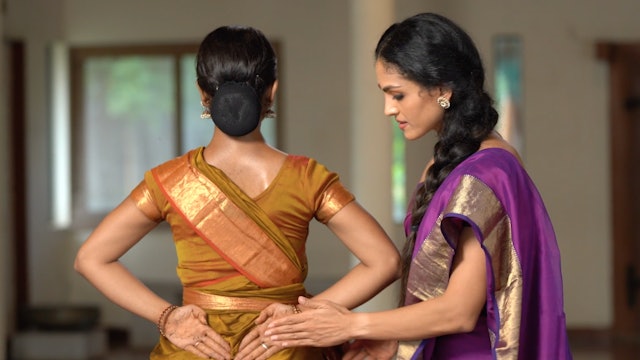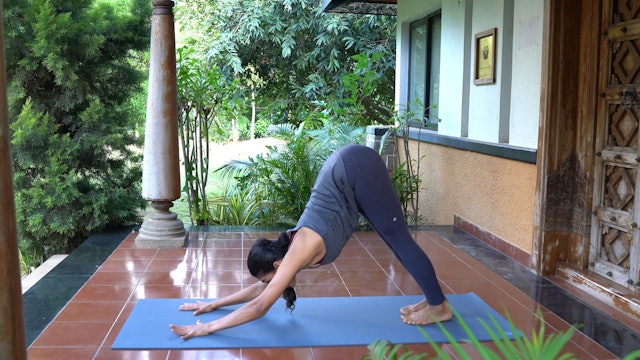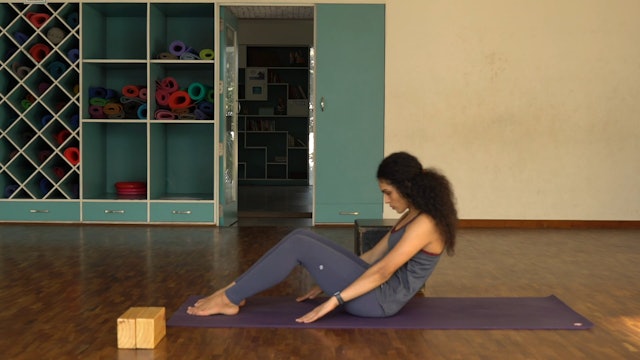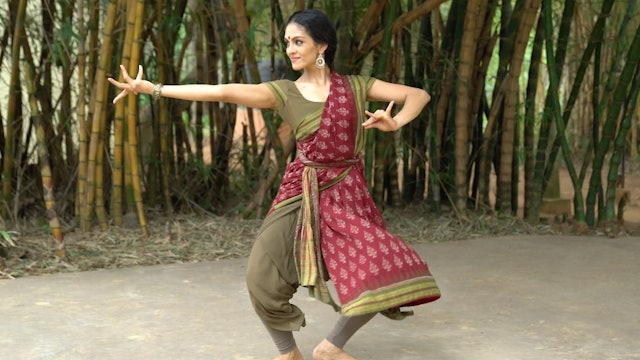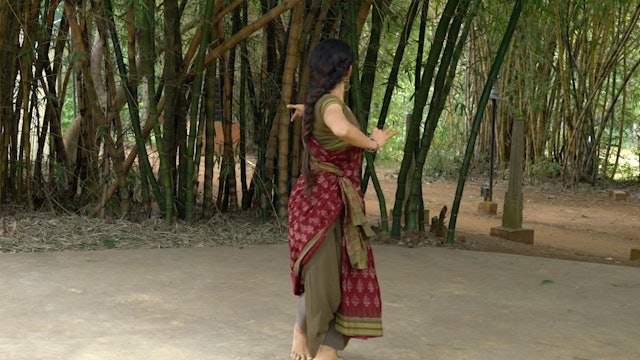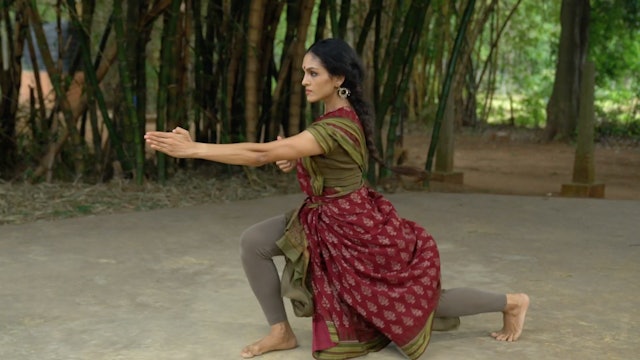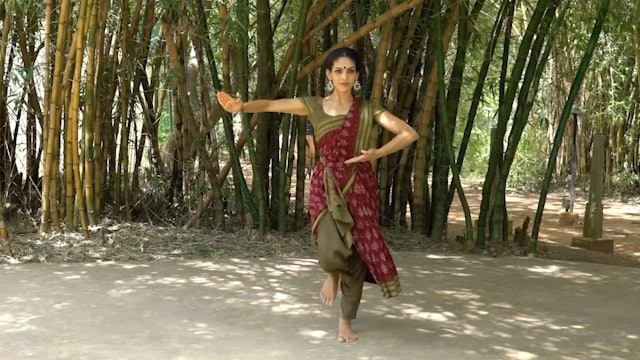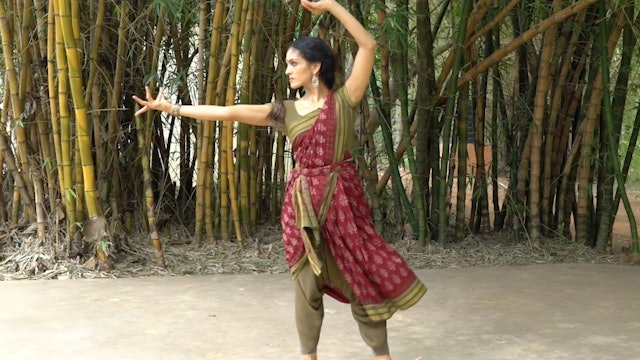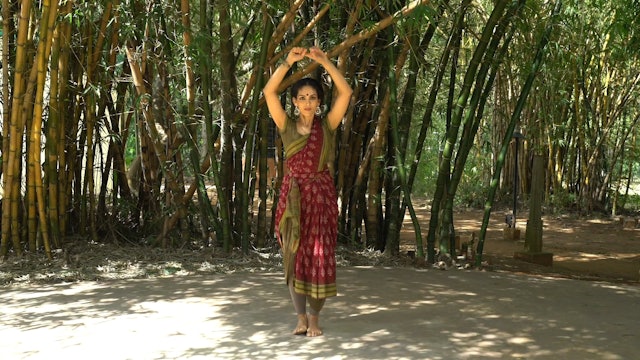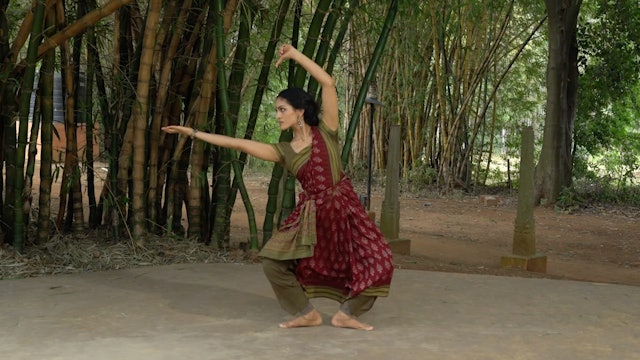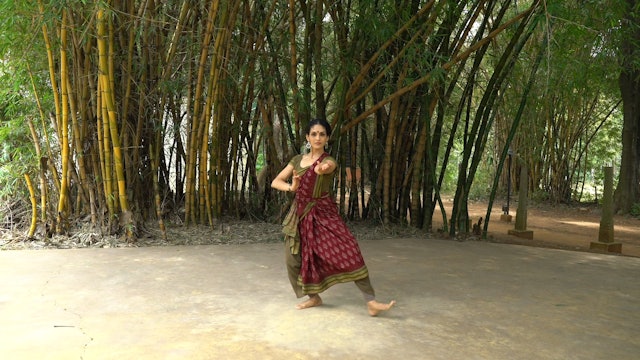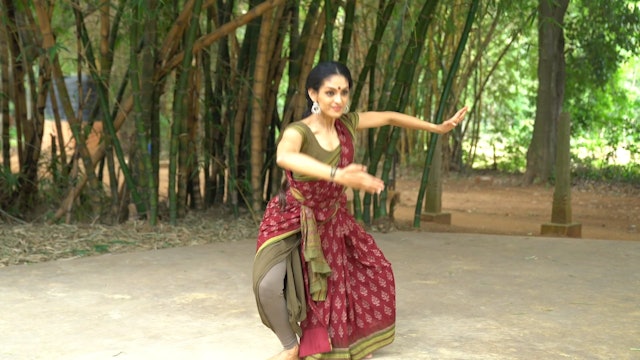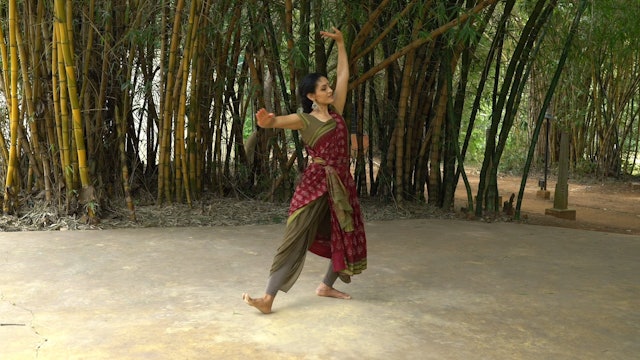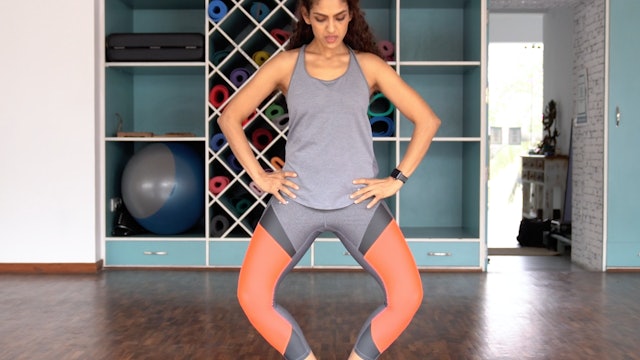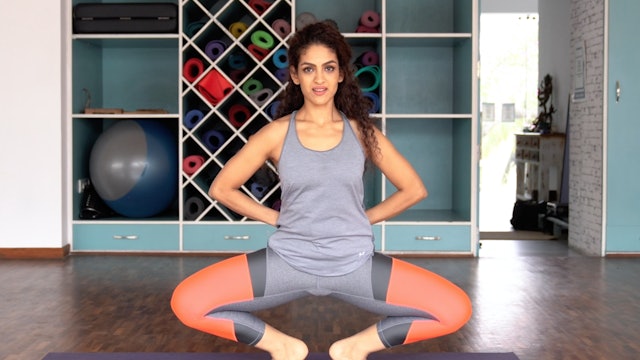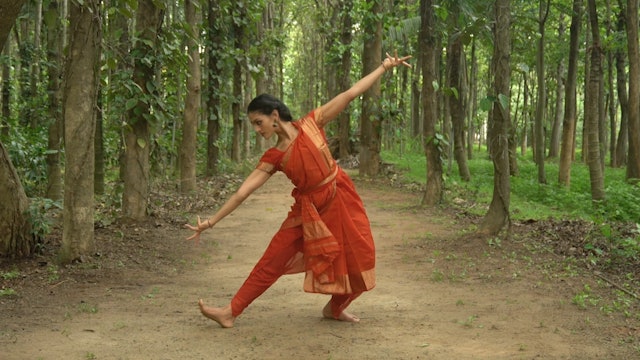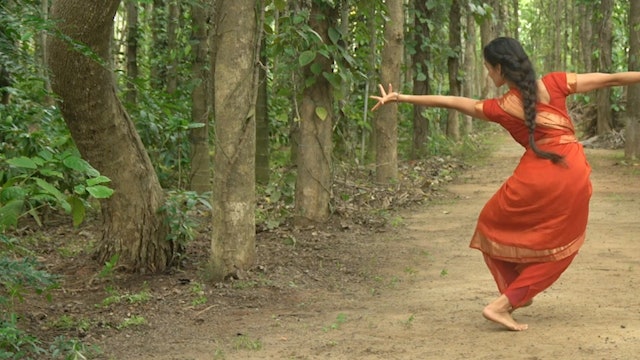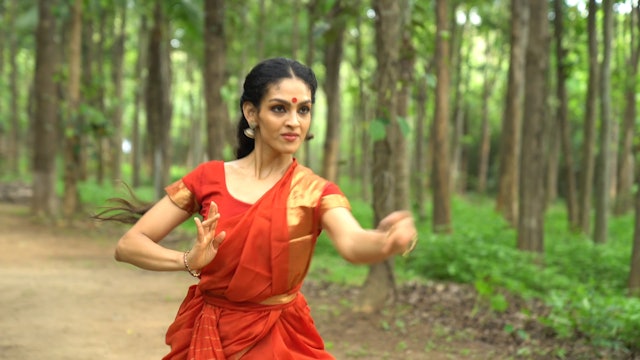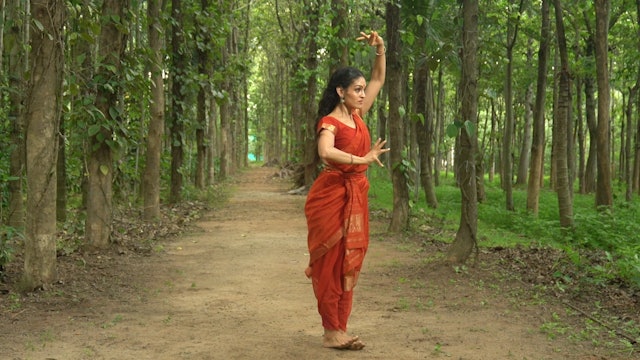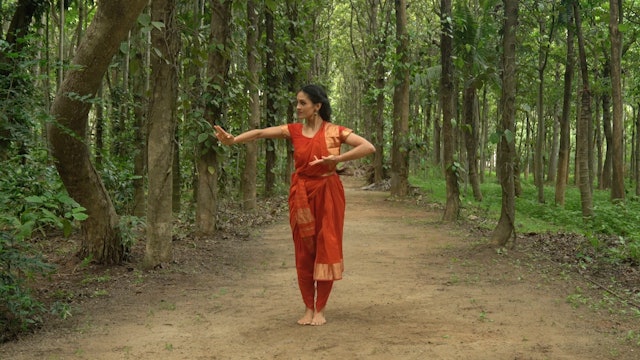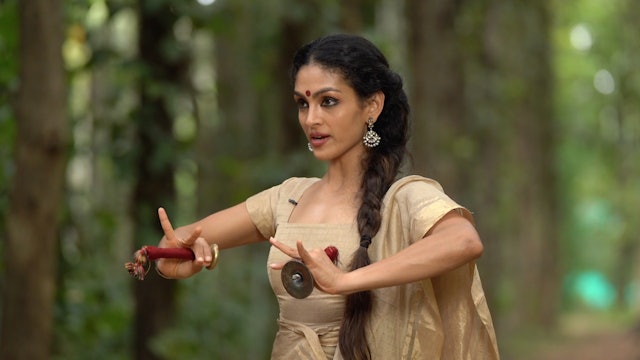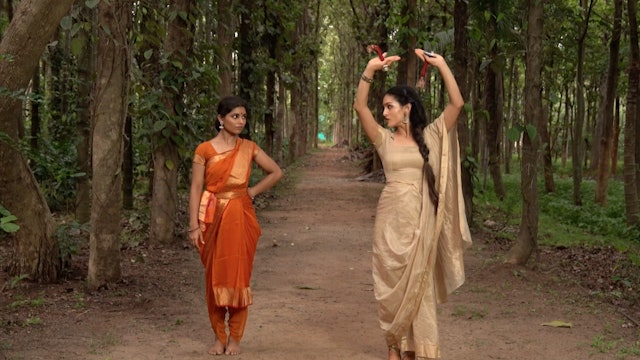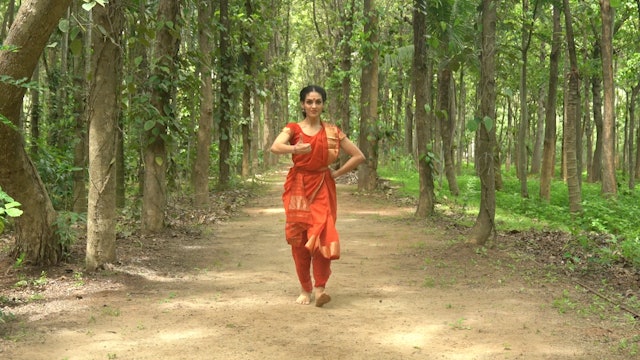-
Alignment in Adavus
The video describes the various Sthanas that are used in the practice of Adavus and the right alignment and muscle engagement to ensure longevity and safety in practice.
-
Arm positions in adavus
The video explains muscle engagement and visualisation to make your arms work with finesse and clarity. The premise of the Raadha Kalpa method is that the movement of the limbs must arise from the core. This video explains the logic of muscular engagement such that the arms are not disconnected f...
-
Warm up : Isolations
The warm up changes in length and content as your body changes. What a conditioned body needs to warm up is very different than a body that is beginning this journey. This warm up is safe and helps a dancer at every level to find openness in the body. It can be done in combination with the hip op...
-
Obliques, flat backs and legs
This introduces the flat back and builds muscles in the back. It is recommended that you do this sequence after you lengthen your hamstrings to prevent your back from curving. It also introduces a lowering action on your quadriceps which will help build stronger legs.
The flexibility series tha...
-
Paraval Adavu 1
Paraval literally means to spread. Some schools of thought also call the Paraval adavu, the 'Pakkadavu' as it moves to the side while sliding. Some others change the name based on the way the foot articulates with the floor. A few of the types of Paraval, can be referred to as Marditam adavau, as...
-
Paraval Adavu 2
Paraval literally means to spread. Some schools of thought also call the Paraval adavu, the 'Pakkadavu' as it moves to the side while sliding. Some others change the name based on the way the foot articulates with the floor. A few of the types of Paraval, can be referred to as Marditam adavau, as...
-
Serikal Adavu
"Serikal", means to slide. This series of Adavus include a variety of sliding movements in the Adavu series of The Raadha Kalpa Method. The first variety is introduced in this series. Technically 'Jaaru' and 'Serikal' mean the same thing, but we will call this second series of sliding Adavus as '...
-
Jaar Adavu/ Sarikal Adavu 2
'Jaaru', literally means, to slide. This is also called the Sarikal Adavu. In the RK Method, we refer to the standing series that end in Samapada as the Jaar Adavu series and the other sliding Adavus that use Muzhumandi, and Aalidam as Sarikal adavus for simplicity.
This Adavu incorporates the ...
-
Bramari Adavu
Bramari literally means to turn. The first Bramari adavu is introduced in the second set of Adavus, the other varieties will be introduced subsequently. It is important to keep the eyes focussed at a particular point and turn the head faster than the body.
Things to keep in mind:
- When stretc... -
Korwe Adavu 1
The Korwe adavu is a combination of previously introduced foot and body articulations. It is called a Korvey adavu as it cannot be placed into any specific category. It has a Tattu, naatu, Bramari, Serikal amongst other movements. Some Korwe adavus also use a Kudittam in the feet.
Things to kee...
-
Korwe Adavu (utplavana 1 )
The Korwe adavu is a combination of previously introduced foot and body articulations. It is called a Korvey adavu as it cannot be placed into any specific category. It has a Tattu, naatu, Bramari, Serikal amongst other movements. Some Korwe adavus also use a Kudittam in the feet.
Things to kee...
-
Teermana Adavu 1
The Theermana or Makutadavu, is placed at the end of a Korwe or Jathi in specific rhythmic patterns, to create an ending.
The leg is either placed outstretched directly in front or at a diagonal of 45 degrees. The foot is flexed and the heel strikes the floor. In the Raadha Kalpa method we begi...
-
Theermana Adavu 2, variation
The Theermana or Makutadavu, is placed at the end of a Korwe or Jathi in specific rhythmic patterns, to create an ending.
The leg is either placed outstretched directly in front or at a diagonal of 45 degrees. The foot is flexed and the heel strikes the floor. In the Raadha Kalpa method we begi...
-
Theermana Adavu 3, variation
The Theermana or Makutadavu, is placed at the end of a Korwe or Jathi in specific rhythmic patterns, to create an ending.
The leg is either placed outstretched directly in front or at a diagonal of 45 degrees. The foot is flexed and the heel strikes the floor. In the Raadha Kalpa method we begi...
-
Aramandi Tips 3
This series will deal with a number of exercises that will work with developing a strong and stable Araimandi. It will also help resolve issues with knee and ankle pain. It must be practised in combination with the Hip openers and Leg strength for maximum benefit.
-
Aramandi Tips 4
This series will deal with a number of exercises that will work with developing a strong and stable Araimandi. It will also help resolve issues with knee and ankle pain. It must be practised in combination with the Hip openers and Leg strength for maximum benefit.
-
Adi Tala Korwe 1
Please watch the first three lectures on Talam before beginning the Korwe series. There is an instruction video for each Korwe.
A Korwe is a set of adavus that are formatted to a specific rhythmic structure, ending with a Muktayam/Teermanam adavu and layered on a Swara like in a Jatiswaram or Ta...
-
Adi Tala Korwe 2
Please watch the first three lectures on Talam before beginning the Korwe series. There is an instruction video for each Korwe.
A Korwe is a set of adavus that are formatted to a specific rhythmic structure, ending with a Muktayam/Teermanam adavu and layered on a Swara like in a Jatiswaram or Ta...
-
Adi Tala Korwe 3
Please watch the first three lectures on Talam before beginning the Korwe series. There is an instruction video for each Korwe.
A Korwe is a set of adavus that are formatted to a specific rhythmic structure, ending with a Muktayam/Teermanam adavu and layered on a Swara like in a Jatiswaram or Ta...
-
Tishra Eka Korwe 1
Please watch the first three lectures on Talam before beginning the Korwe series. There is an instruction video for each Korwe.
The Korwe series continues with a variety of Talams. This is the first Korwe you will learn in Tishra Eka Talam.
Try to notice the difference in the rhythmic cycle as...
-
Tishra Eka Korwe 2
Please watch the Talam lectures upto Lecture 5 before beginning this korwe. There is an instruction video for each Korwe.
The Korwe series continues with a variety of Talams. This is the second Korwe you will learn in Tishra Eka Talam.
Try to notice the difference in the rhythmic cycle as you ...
-
Pancha Nadai/ Jathi Korwe Instructions 1
Please watch the Talam lectures upto Lecture 5 before beginning this Korwe. There are two parts for the instruction of this Korwe, in Adi Talam.
The Korwe series continues with a variety of Talams. This is the first Korwe in Adi Talam that layers the adavus in all 5 Jathis. (Tishra, Chatushra, K...
-
Pancha Nadai/ Jathi Korwe Instructions part 2
Please watch the Talam lectures upto Lecture 5 before beginning this Korwe. There are two parts for the instruction of this Korwe, in Adi Talam.
The Korwe series continues with a variety of Talams. This is the first Korwe in Adi Talam that layers the adavus in all 5 Jathis. (Tishra, Chatushra, K...
-
Adi Tala: Pancha Nadai/ Jathi Korwe
Please watch the Talam lectures upto Lecture 5 before beginning this Korwe. There are two parts for the instruction of this Korwe, in Adi Talam.
The Korwe series continues with a variety of Talams. This is the first Korwe in Adi Talam that layers the adavus in all 5 Jathis. (Tishra, Chatushra, K...
